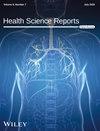COVID-19 Vaccine Uptake and Socioeconomic Disparities in Tanzania: A Population-Based Cross-Sectional Study Amid High Hesitancy
Abstract
Background and Aims
Socioeconomic disparities in healthcare access, including vaccination services, persist worldwide. The COVID-19 pandemic amplified these disparities, particularly in low-resource settings such as Tanzania, where vaccine hesitancy remains a significant challenge. Understanding these disparities is crucial for achieving equitable vaccine coverage. This study assessed regional variations in socioeconomic disparities in COVID-19 vaccine uptake in Tanzania, with education used as a proxy for socioeconomic status. The findings aim to guide targeted interventions for populations facing greater disadvantages.
Methods
A population-based cross-sectional survey was conducted between June and July 2022, involving 22,910 adults from urban areas in Mwanza, Iringa, Arusha, and Morogoro regions. Participants were selected using cluster sampling. Vaccine uptake, defined as receiving any complete dose of the COVID-19 vaccine, was the primary outcome. Disparities were analyzed using concentration curves and indices, while multivariable logistic regression identified factors contributing to these disparities.
Results
Of the respondents, approximately 20% were fully vaccinated. Significant educational disparities favoring the educated were observed, with the most pronounced gaps in Mwanza (CI: 0.093, p < 0.001) and Arusha (CI: 0.062, p < 0.001) compared to Iringa (CI: 0.011, p < 0.01) and Morogoro (CI: 0.040, p < 0.001). Multivariable analysis identified age, marital status, occupation, and knowledge as potential factors associated with vaccine uptake disparities. Educated individuals were significantly more likely to be vaccinated, underscoring the role of education in shaping vaccine access and acceptance.
Conclusions
This study highlights the need to address regional and socioeconomic disparities in COVID-19 vaccine uptake in Tanzania. Tailored policies that consider education levels, employment type, and community perceptions are essential to improving vaccine coverage. Efforts must focus on reducing hesitancy and promoting equitable access, particularly among disadvantaged groups.


 求助内容:
求助内容: 应助结果提醒方式:
应助结果提醒方式:


